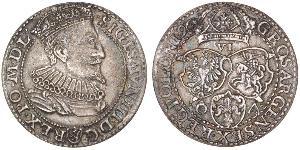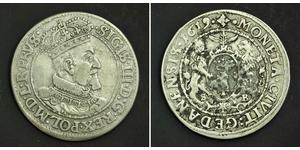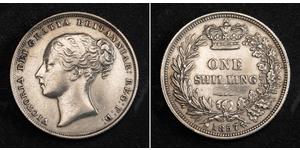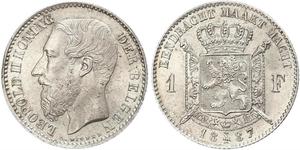6 Zloty / 1 Thaler Poland / Polish-Lithuanian Commonwealth (1569- ...
1794, Kingdom of Poland, Stanislaw II. Silver 6 Zlotych (Talar) Coin.
Mint Year: 1794
Mint Place: Warsaw
Mintage: 182,000 pcs.
Denomination: 6 Zlotych (Talar koronny)
Reference: Davenport 1623, Gumowski 2399, KM-216. R!
Material: Silver (.833)
Weight: ca. 24gm
Diameter: 38mm
Obverse: Head of Stanislaus Augustus as King of Poland and Duke of Lithuania right.
Legend: STANISLAUS AUGUSTUS D.G. REX POLON. M. D. LIT.
Reverse: Crowned shield with arms of Poland and Lithuania, surmounted by erder band.
Legend: COLONIENS : 1794 – 14 1/12 EX MARCA PUR: / 6. ZL.
Stanislaw II August Poniatowski (born Count Stanislaw Antoni Poniatowski; 17 January 1732 – 12 February 1798) was the last King and Grand Duke of the Polish-Lithuanian Commonwealth (1764–95). He was the son of Count Stanislaw Poniatowski, Castellan of Kraków, and Princess Konstancja Czartoryska; brother of Michal Jerzy Poniatowski, (1736–94), Primate of Poland; and uncle to Prince Józef Poniatowski, (1763–1813).
Poniatowski was born in 1732 at Wolczyn, (now Belarus). By the age of twenty, in 1752, as a Sejm deputy, he had attracted attention with his oratory.
He owed his career ultimately, however, to his family connections with the powerful Czartoryski family, who in 1755 sent him to Saint Petersburg, Russian Empire, in the service of British ambassador Sir Charles Hanbury-Williams. The same year, through the influence of Russian Empress Elizabeth and Chancellor Bestuzhev-Ryumin, he joined the Russian court as ambassador of Saxony.
At Saint Petersburg he met the twenty-six-year-old future Empress Catherine Alexeievna (Catherine the Great). She was irresistibly drawn to the handsome, brilliant young Polish nobleman, for whom she forsook all other lovers. In 1755 he was appointed to the office of Stolnik Litewski and later he became Starosta of Przemysl.
In October 1763, upon the death of Poland’s King August III, negotiations began regarding who should be elected king. After a coup d'état on 7 September 1764, supported by Russian troops, the ambitious 32-year-old Poniatowski was elected King of the Polish-Lithuanian Commonwealth.
The formal coronation took place in Warsaw on 25 November 1764. The new King’s uncles in the “Familia” would have preferred another nephew, Prince Adam Kazimierz Czartoryski on the throne, characterized by his contemporary as débauché, sinon dévoyé (debauched if not depraved), but Czartoryski had declined to seek the office.
Stanislaw August, as he now styled himself, combining the names of his two immediate royal predecessors, or "Ciolek" (bull calf, as he was derisively referred to in reference to his Coat-of-Arms), inaugurated economic changes by supporting the Familia’s reform program until 1766, when he fell out with his uncles.
In 1768 the Polish-Lithuanian Commonwealth effectively became a protectorate of the Russian Empire. As king, Poniatowski supported the Russian army’s repression of the Bar Confederation between 1768-72. In 1770 the Council of the Bar Confederation had proclaimed him dethroned. In 1771 he was kidnapped by Bar Confederate sympathizers and briefly held prisoner outside of Warsaw.
Although he protested the first partition of the Commonwealth (1772), he was powerless to do anything about it, and in the face of implacable opposition from the Polish magnates.
Moreover, Poniatowski was obliged to place his reliance in Russia’s ambassador, Otto Magnus von Stackelberg.
n 1783/1784 he married morganatically his lover Elzbieta Szydlowska (1748–1810), whose first husband Jan Jerzy Grabowski was general inspektor wojsk litewskich, and by whom he had an only son, born before marriage, Count Stanislaw Konopnicy-Grabowski (1780-Dresden, 1845).
Poniatowski son married firstly Cecylia Dembowska (19 December 1787 – 17 January 1821 ), and secondly May 8, 1822 Countess Julia Zabiello; he left issue, his descendants were the Counts Konopnicy-Grabowski. Acting in concert with him, he hoped to strengthen his authority and bring about essential reforms.
It was only during the Four-Year Sejm of 1788-1792 that he threw in his lot with the reformers, centered in the Patriotic Party, and with them co-authored the Constitution of 3 May 1791.
Poniatowski’s eloquent speech before the Sejm on taking an oath to uphold the newly adopted Constitution moved his audience to tears. Shortly thereafter, the Targowica Confederation was formed by Polish nobility to overthrow the Constitution. The confederates aligned with Russia’s Catherine the Great, and the Russian army entered Poland, starting the Polish-Russian War of 1792.
After a series of battles, Poniatowski, upon the advice of Hugo Kollataj and others, acceded to the Confederation. This undermined the operations of the Polish Army, which under Tadeusz Kosciuszko and the King’s own nephew, Prince Jozef Poniatowski, had been performing prodigiously on the battlefield. The war was ended, and Russia and Prussia undertook the Second partition of Poland in 1793.
King Stanislaw August remains a controversial figure. He was accused by some of striving for absolutism, of doing away with the liberties of the szlachta (Polish nobility), of desiring the downfall of the Roman Catholic Church; by others, of weakness and subservience, even of treason, especially after he had joined the Targowica Confederation.
Nevertheless, he did accomplish much in the realm of culture and education. He founded the School of Chivalry (otherwise “Corps of Cadets”), which functioned 1765-1794 and whose alumni included Tadeusz Kosciuszko; and the Commission of National Education (1773), the world’s first national ministry of education. In 1765 he helped found the Monitor, the leading periodical of the Polish Enlightenment, and the Polish national theater. He hosted his famous “Thursday Dinners”, the most brilliant social functions in the Polish capital. He supported the establishment of manufactures and the development of mining. He remodeled the Royal Castle in Warsaw, and erected the elegant Royal Baths complex in Warsaw’s most romantic park. He created a numismatic collection, a picture gallery, and an engravings room. His plan to create an even larger painting gallery in Warsaw was interrupted by the destruction of Poland; nonetheless, most of the paintings he had ordered can now be seen at the Dulwich Picture Gallery in London.
After the final, Third Partition of the Polish-Lithuanian Commonwealth, Stanislaw August was forced to abdicate (25 November 1795) and left for Saint Petersburg, Russia. There, a virtual prisoner, mhe subsisted on a pension granted to him by Empress Catherine the Great, and died deeply in debt. He was buried at the Catholic Church of St. Catherine in St. Petersburg.
In 1938 his remains were transferred to a church at Wolczyn, his birthplace, and in 1995, to St. John’s Cathedral in Warsaw, where, on 3 May 1791, he had celebrated the adoption of the Constitution he had co-authored and/or endorsed. Among his living relatives is Elena Poniatowska, a famous Mexican journalist and author.
View all coins in the group
(1500 X 744 pixels, file size: ~251K)
Posted by: anonymous 2019-03-24
Polen. Stanislaus August 1764-1795. Taler (6 Zlotych) 1794, Warschau. Kopf / Wappen. Davenport 1623, Kopicki 2488. Winzige Kratzer, minimal justiert, fast vorzüglich
(1500 X 741 pixels, file size: ~208K)
Posted by: anonymous 2019-04-15
Polen. Stanislaus August 1764-1795. Taler 1795, Warschau. Davenport 1623, Gumowski 2399, Kopicki 2488. Kleines Zainende, minimal justiert, sehr schön +
(1500 X 772 pixels, file size: ~231K)
Posted by: anonymous 2019-05-08
Polen. Stanislaus August 1764-1795. Taler 1794, Warschau. Davenport 1623, Gumowski 2399, Kopicki 2488. Schrötlingsfehler, sehr schön - vorzüglich
(900 X 443 pixels, file size: ~116K)
Posted by: anonymous 2017-03-07
Polen, Stanislaus August Taler 1794, Warschau. Davenport 1623, Gumowski 2399, Kopicki 2488. Schön - sehr schön
(800 X 398 pixels, file size: ~93K)
Posted by: anonymous 2016-03-27
Stanisław August Poniatowski 1764-1795; POLSKA - Stanisław August Poniatowski 1764-1795. talar 1795, Warszawa, srebro 23.87 g, Plage 374, Dav. 1623, mennicza wada krążka - GRADE: III
(800 X 405 pixels, file size: ~79K)
Posted by: anonymous 2016-03-27
Stanisław August Poniatowski 1764-1795; POLSKA - Stanisław August Poniatowski 1764-1795. talar 1795, Warszawa, srebro 24.05 g, Plage 374, Dav. 1623 - GRADE: II-/III+
1 Shilling United Kingdom of Great Britain and Ireland (1801 ...
group has 99 coins / 92 prices
⇑
1 Franc Belgium Silver Leopold II of Belgium(1835 - 1909)
group has 12 coins / 10 prices
⇑

-500-250-UjjZGYbcmScAAAFqtgGZtx8E.jpg)
-300-150-dwrZGYbcgfgAAAFpwoiZt65Q.jpg)
-300-150-UjjZGYbcmScAAAFqtgGZtx8E.jpg)
-300-150-Xbl0WDeKgqAAAAFqzZaVQJXg.jpg)
-300-150-6aEKX9ISE7MAAAFaCHhMgKmY.jpg)
-300-150-kSYKX9ISqBsAAAFTHoP117aS.jpg)
-300-150-umgKX9IS2VgAAAFTwjP117aS.jpg)






-300-150-IxfBwcI07O0AAAEoNYX7lLA7.jpg)








